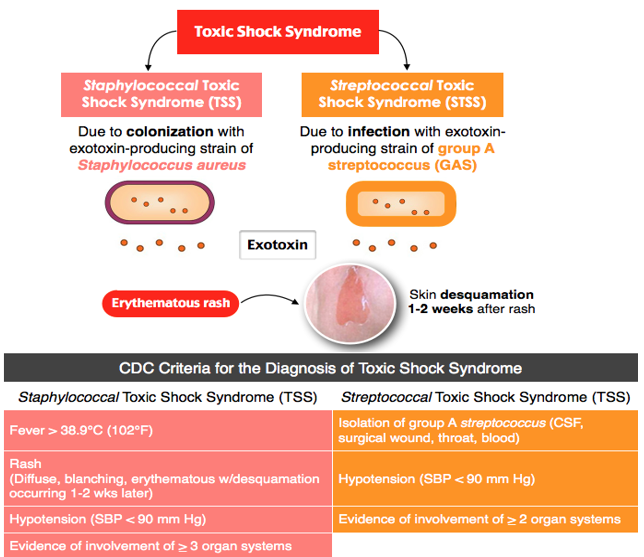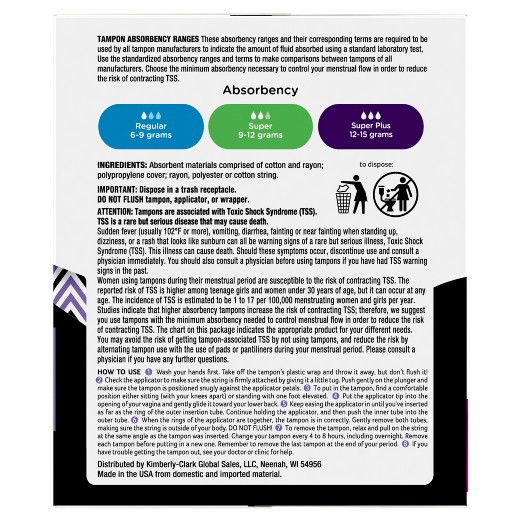BY LAUREN BRUMAGE | SQ ONLINE WRITER | SQ ONLINE (2017-18)
In 2012, supermodel Lauren Wasser lost her right leg and the toes on her left foot. She had been physically active and, at the young age of 24, seemed the picture of health. However, a rapid onset of symptoms including a 107°F fever and a heart attack signalled a dire health emergency [1]. After the aforementioned amputations, Wasser underwent regular treatments for the pain and damage that lingered in her left foot for several years. These treatments were unable to manage the damage effectively, and as a result Wasser recently had to have her left leg amputated as well [2].
Known as toxic shock syndrome (TSS), Wasser’s sudden and life-changing illness was the result of simply using a tampon for too long. TSS is typically caused by the bacteria species Staphylococcus aureus, but bacteria from group A streptococcus can also be causative agents [3]. These bacteria can overgrow and produce a toxin called toxic shock syndrome toxin-1 (TSST-1) that acts as a superantigen, a substance that stimulates an excessive immune response [4,5]. This immune response induces severe inflammation that harms surrounding tissues [4]. Symptoms of TSS include high fever, reduced blood pressure (hypotension), confusion, and rash formation [5,6]. If left untreated, TSS can manifest in more severe consequences such as multiple organ failure and death within hours [6,7].


TSS entered the national spotlight in the 1970s as tampon manufacturers sought to make increasingly absorbent tampons. The excessively absorbent materials used in the tampons were conducive to the growth of TSS-causing bacteria, resulting in an epidemic of TSS cases. Over 5,000 cases of TSS occurred in the United States alone between 1976 and 1996; the worst year, 1980, witnessed 800 cases [4]. Today, the Food and Drug Administration (FDA) stipulates that tampon manufacturers have a legal responsibility to notify consumers of the risk of TSS on packaging and the problematic tampon materials of the 1970s are now banned in tampons sold in the United States [8]. The graphic below shows a sample FDA-approved warning label. While the label does effectively explain the risk of TSS and how to avoid it, the font is quite small and is rather unlikely to be examined with proper attention by consumers.
However, as frightening as TSS may sound, it is not a common condition nor does the presence of S. aureus guarantee that TSS will occur. Approximately 80% of people carry S. aureus somewhere on their body either constantly or occasionally, and S. aureus often exists as a harmless commensal species [7,9]. Why do S. aureus, and less often group A streptococcus, cause TSS occasionally with tampon use? Scientists think that tampons (especially super-absorbent ones) provide an environment conducive to bacterial growth, allowing these normally harmless species to overgrow and stimulate an immune response [8,9]. Thus, tampon misuse, such as leaving one in for longer than the time recommended on the warning label, can increase the risk of TSS. The tampons do not directly cause TSS or introduce the bacteria that do cause it.

Furthermore, a common misconception is that TSS can only result from tampon misuse. This is not true! TSS can result from a variety of other scenarios including infection following surgery and infection of open wounds [5]. It is not a gender- or age-specific syndrome either. Young women are indeed at a greater risk, perhaps because many are unaware of TSS (see above image caption regarding warning labels) [4]. One potential reason behind the lack of awareness about TSS aside from miniscule warnings on tampon packaging is the fact that it has been over 30 years since the major outbreak of TSS cases in 1980. Additionally, reproductive health education is frequently inadequate in that it fails to cover feminine hygiene issues associated with tampons. Menstruating women do not account for all TSS cases though. Male patients, including Muppets creator Jim Henson, account for â…“ of TSS cases and TSS cases have been reported in children not yet of menstruating age [3,8]. While TSS sometimes proves fatal or necessitates drastic action, as in the case of Wasser’s amputations, most patients with TSS recover when treated promptly [10].
Lauren Wasser’s case may be an outlier and TSS may be rare, but TSS is still a severe condition for which new cases arise every year. There are several measures you can take to reduce your risk of experiencing TSS. If you use tampons, simply use them as directed on the packaging or change them more frequently than recommended to be even more cautious. It is also a good idea to avoid super-absorbent tampons [4]. Keep all wounds clean and covered with a bandage or gauze to mitigate the risk of infection. Finally, if you think you may be experiencing TSS, contact a medical professional immediately as most patients recover completely following successful treatment.
[hr gap=”0″]
Sources
- https://www.washingtonpost.com/news/to-your-health/wp/2017/12/19/this-model-lost-a-leg-because-of-an-infection-from-tampons-heres-what-she-wants-you-to-know/?utm_term=.dc0def7b1fac
- https://www.today.com/health/lauren-wasser-loses-second-leg-toxic-shock-syndrome-t121266
- https://www.mayoclinic.org/diseases-conditions/toxic-shock-syndrome/symptoms-causes/syc-20355384
- https://www.washingtonpost.com/news/speaking-of-science/wp/2016/03/21/women-are-still-getting-toxic-shock-syndrome-and-no-one-quite-knows-why/?utm_term=.b2def9dbfde8
- https://www.ncbi.nlm.nih.gov/pubmed/16145118
- https://www.ncbi.nlm.nih.gov/pubmed/17375201
- https://www.canada.ca/en/public-health/services/laboratory-biosafety-biosecurity/pathogen-safety-data-sheets-risk-assessment/staphylococcus-aureus.html
- https://www.popsci.com/toxic-shock-syndrome#page-2
- https://www.nhs.uk/conditions/Toxic-shock-syndrome/#preventing-toxic-shock-syndrome
- http://www.cnn.com/2017/12/22/health/toxic-shock-syndrome-partner/index.html
